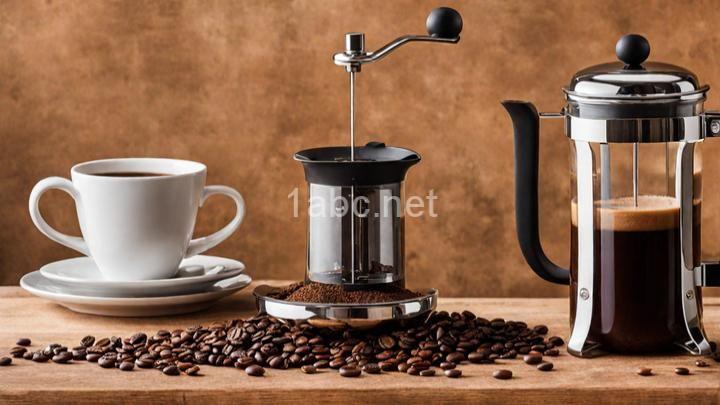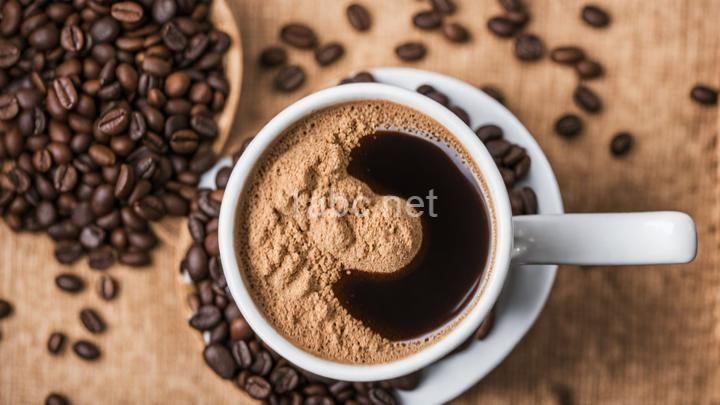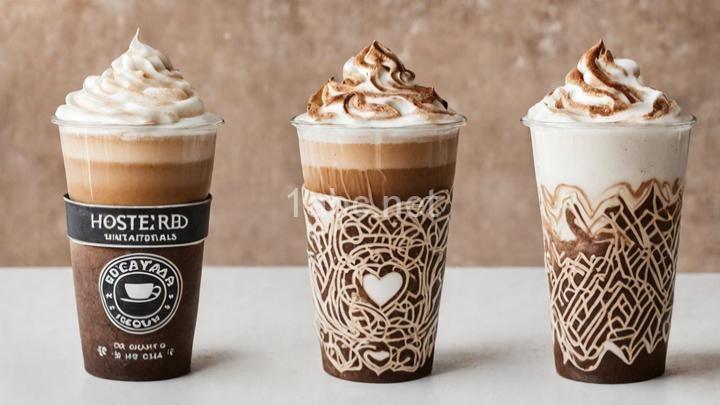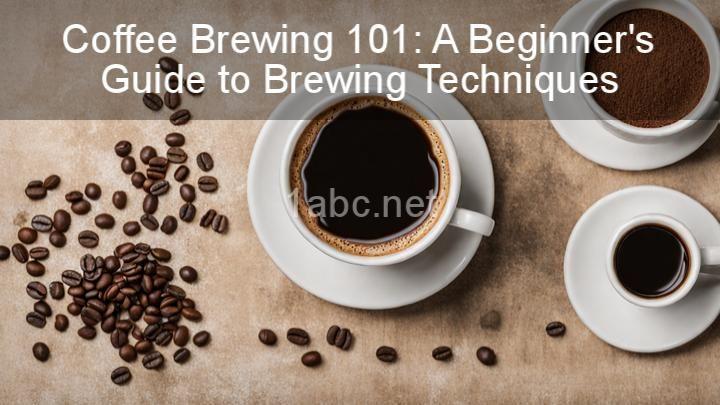From French Press to Espresso: Matching Coffee Grind to Brewing Method

Introduction:
Grab your favorite mug and get ready to explore the world of coffee brewing methods! Whether you're a fan of the classic French press or prefer the boldness of espresso, one crucial factor that can make or break your cup of joe is the grind size. In this guide, we'll walk you through the art of matching your coffee grind to your brewing method, ensuring a delicious and satisfying brew every time.
I. Understanding Coffee Grind Sizes:
Before we dive into the specifics of each brewing method, let's start by understanding the different coffee grind sizes available. The grind size refers to how finely or coarsely the coffee beans are ground. Different brewing methods require different grind sizes to achieve the desired flavor and extraction. Here are the four main categories of coffee grind sizes:
- Coarse grind: Think chunky sea salt – perfect for French press and cold brew.
- Medium grind: Similar to granulated sugar – ideal for drip coffee makers.
- Fine grind: Similar to table salt – great for pour-over and Aeropress.
- Extra fine grind: Almost powdery – essential for espresso machines.
Now that we have a basic understanding of coffee grind sizes, let's explore how they match with different brewing methods.
II. Brewing Methods and Matched Grind Sizes:
A. French Press:
Description: The French press is known for its full-bodied and robust flavor profile, achieved through immersion brewing. The coffee grounds are steeped in hot water, allowing the flavors to be extracted over time.
Recommended Coffee Grind Size: Coarse
Explanation: A coarse grind is recommended for French press brewing because it allows for longer steeping time without over-extraction. The larger particles of coffee grounds are less likely to pass through the metal filter, resulting in a rich and flavorful brew.
B. Drip Coffee Maker:
Description: Drip coffee makers are popular for their convenience and ease of use, creating a smooth and balanced cup of coffee. The water drips through the coffee grounds, extracting the flavors as it passes through.
Recommended Coffee Grind Size: Medium
Explanation: A medium grind is ideal for drip coffee makers because it ensures optimal extraction during the drip process. The water flows evenly through the coffee grounds, resulting in a well-rounded flavor profile.
C. Pour-over:
Description: Pour-over brewing involves manually pouring hot water over ground coffee in a slow, controlled manner. This method allows for precise control over the brewing process and produces a clean and vibrant cup of coffee.
Recommended Coffee Grind Size: Fine
Explanation: A fine grind is recommended for pour-over brewing because it facilitates even extraction. The hot water easily flows through the smaller coffee particles, allowing for a balanced and flavorful cup of coffee.
D. Aeropress:
Description: The Aeropress is a versatile brewing device that offers a wide range of possibilities, from espresso-style shots to Americano-like brews. It uses a combination of pressure and immersion brewing.
Recommended Coffee Grind Size: Fine
Explanation: Similar to pour-over, a fine grind is recommended for the Aeropress because it provides optimal extraction. The fine coffee particles allow for better control over the brewing process and experimentation with different techniques.
E. Espresso Machines:
Description: Espresso machines deliver intense and concentrated shots of coffee by forcing hot water through finely ground coffee under high pressure. This method produces a rich and bold shot of espresso.
Recommended Coffee Grind Size: Extra fine
Explanation: An extra fine grind is essential for creating the resistance needed for proper extraction in espresso machines. The fine coffee particles create a dense puck that allows for the optimal extraction of flavors, resulting in a rich and bold shot of espresso.
III. Tips for Grinding Coffee Beans:
Now that you know which grind size to use for each brewing method, here are some additional tips for grinding coffee beans:
-
Invest in a good quality burr grinder: A burr grinder allows for more precise and consistent grinding, ensuring that each coffee particle is the desired size.
-
Adjust grind size according to your personal preference: While the recommended grind sizes are a good starting point, feel free to adjust the grind size to suit your taste. If you prefer a stronger cup of coffee, you can try a slightly finer grind, and if you prefer a milder cup, you can try a coarser grind.
-
Practice consistency in grind size: Consistency is key when it comes to brewing coffee. Aim to grind your coffee beans to the same size each time to ensure consistent brewing results and a balanced flavor profile.
Conclusion:
Now that you have a better understanding of matching coffee grind to brewing methods, it's time to put your knowledge into practice. Experiment with different grind sizes and techniques to unlock new flavors and enhance your coffee experience. Remember, the perfect cup of coffee starts with the right grind! Happy brewing!
FREQUENTLY ASKED QUESTIONS
What is the purpose of matching coffee grind to brewing method?
The purpose of matching coffee grind to the brewing method is to ensure that you extract the optimal flavors from your coffee beans. Different brewing methods require different grind sizes in order to achieve the desired taste and strength of your coffee.For example, if you are using a French press, which has a longer steeping time, you would need a coarser grind. This allows for a slower extraction process and results in a fuller-bodied and more robust cup of coffee.
On the other hand, if you are using an espresso machine, which utilizes high pressure and a shorter brewing time, you would need a finer grind. This allows for a quicker extraction and produces a concentrated and intense shot of espresso.
Matching the grind size to the brewing method is crucial because it determines the surface area of the coffee particles that come into contact with water. A finer grind exposes more surface area, resulting in a faster extraction, while a coarser grind slows down the extraction process.
If the grind size does not match the brewing method, you may end up with an over-extracted or under-extracted cup of coffee. Over-extraction can lead to a bitter and unpleasant taste, while under-extraction can result in a weak and watery brew.
By adjusting the grind size to match the brewing method, you can achieve the optimal balance of flavors, ensuring a delicious and satisfying cup of coffee every time.
How does the grind size affect the taste of coffee?
The grind size of coffee beans plays a crucial role in determining the taste of your cup of coffee. Let's delve into how it affects the flavor profile.When you grind coffee beans, you are essentially breaking them down into smaller particles. These particles have varying surface areas, which in turn affects the extraction process when brewing coffee.
If you opt for a finer grind size, such as espresso grind, the increased surface area allows for a quicker extraction. This results in a bolder and stronger flavor profile, with more concentrated notes of bitterness and acidity. On the other hand, a finer grind can also lead to over-extraction if not properly controlled, resulting in an unpleasant, bitter taste.
Conversely, a coarser grind size, like that used for French press or cold brew, has a larger particle size and therefore a smaller surface area. This means that the extraction process takes longer, resulting in a milder and less intense flavor profile. Coarser grinds tend to highlight sweeter and nuttier notes, with less bitterness and acidity.
It's worth noting that the brewing method you choose also influences the impact of grind size on taste. Different methods require different grind sizes to achieve optimal extraction. For example, a pour-over method may benefit from a medium grind size, while a Turkish coffee preparation calls for an extra fine grind.
Experimenting with different grind sizes can be a fun way to explore and personalize your coffee experience. By adjusting the grind size, you can tailor the taste of your coffee to your preferences, whether you prefer a bold and strong cup or a smoother and milder one.
Remember, though, that achieving the perfect grind size is just one piece of the puzzle. Factors like coffee bean quality, water temperature, and brewing time also contribute to the overall taste. So, don't hesitate to explore and refine your brewing technique to find the perfect balance for your taste buds. Enjoy your coffee journey!
What grind size should I use for a French press?
When brewing coffee with a French press, it's important to use a coarse grind size. This allows for a slower extraction process and helps to prevent over-extraction, resulting in a smoother and less bitter cup of coffee. A coarse grind size typically resembles coarse sea salt or breadcrumbs. It's worth noting that the grind size can vary slightly depending on personal preference, so feel free to experiment and adjust accordingly. Happy brewing!
What grind size is suitable for pour-over coffee?
When it comes to pour-over coffee, the grind size plays a crucial role in determining the quality and taste of your brew. Generally, a medium-fine grind works best for pour-over coffee. This grind size allows for a balanced extraction, ensuring that you get a flavorful and well-rounded cup of coffee.A medium-fine grind is finer than what you would typically use for a drip coffee maker but coarser than espresso. It should have a texture similar to sand or table salt. This grind size allows hot water to pass through the coffee grounds at an optimal rate, extracting the desirable flavors without over-extraction.
If your grind is too fine, the water may struggle to flow through the coffee bed, resulting in a slow and bitter brew. On the other hand, if your grind is too coarse, the water will pass through too quickly, resulting in a weak and under-extracted cup of coffee.
It's important to note that the ideal grind size can vary depending on the specific pour-over method you are using. For example, a Chemex typically requires a slightly coarser grind compared to a V60 or Kalita Wave. Therefore, it's worth experimenting with different grind sizes to find the perfect balance for your preferred pour-over method.
Remember, achieving the right grind size is just one aspect of making a great cup of pour-over coffee. Factors such as water temperature, brew time, and coffee-to-water ratio also play significant roles. So, don't hesitate to tinker with these variables to discover your ideal pour-over recipe. Happy brewing!


